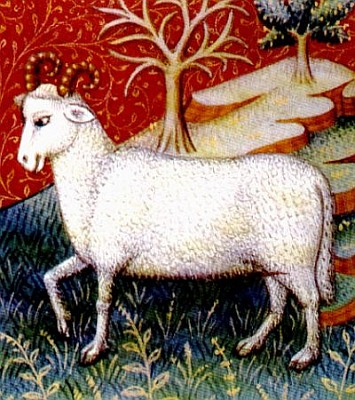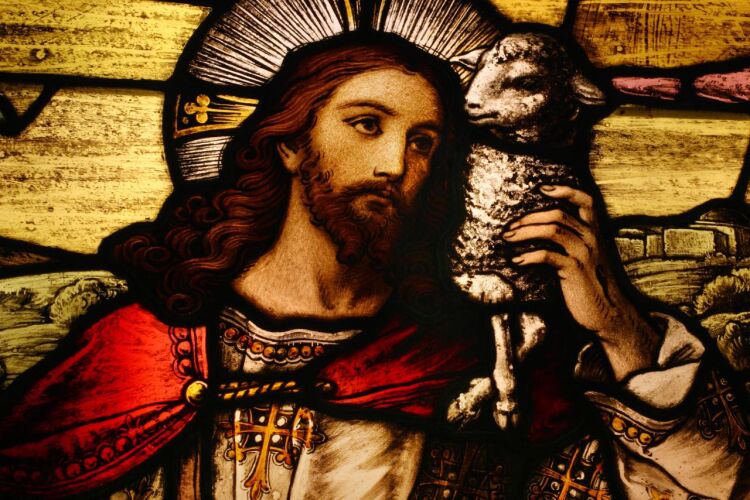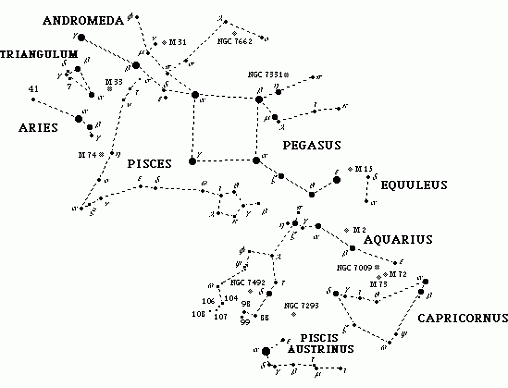|

From the Apocalypse of St. John 5:6-14
And I saw: and
behold in the midst of the throne and of the four living creatures, and
in the midst of the ancients, a Lamb standing as it were slain, having
seven horns and seven eyes: which are the seven Spirits of God, sent
forth into all the earth. And he came and took the book out of
the right hand of him that sat on the throne.
And when he had opened the book, the four living creatures, and the
four and twenty ancients fell down before the Lamb, having every one of
them harps, and golden vials full of odours, which are the prayers of
saints: And they sung a new canticle, saying: Thou art worthy, O Lord,
to take the book, and to open the seals thereof; because thou wast
slain, and hast redeemed us to God, in thy blood, out of every tribe,
and tongue, and people, and nation. And hast made us to our God a
kingdom and priests, and we shall reign on the earth.
And I beheld, and I heard the voice of many angels round about the
throne, and the living creatures, and the ancients; and the number of
them was thousands of thousands, Saying with a loud voice: The Lamb
that was slain is worthy to receive power, and divinity, and wisdom,
and strength, and honour, and glory, and benediction. And every
creature, which is in heaven, and on the earth, and under the earth,
and such as are in the sea, and all that are in them: I heard all
saying: To him that sitteth on the throne, and to the Lamb,
benediction, and honour, and glory, and power, for ever and ever.
And the four living creatures said: Amen. And the four and twenty
ancients fell down on their faces, and adored him that liveth for ever
and ever.
With the Sign of Aries, we see the Agnus Dei, "the Lamb of
God Who taketh away the sins of the world" as St. John describes Him in
his Gospel. We pray those words three times at the Mass, striking our
breast with each prayer and begging His mercy, just before Communion,
when we become
One with Him through the Eucharist.
Christ as the Lamb of God was foreshadowed by the Passover Lamb, when
the Israelites were told to take the blood of an unblemished, male lamb
and paint their doorposts with it so they'd be spared the punishments
God meted out to the Egyptians who held them in captivity, in this
case, the death of their firstborn sons. The flesh of the lamb was to
be eaten -- with unleavened bread. The blood of the lamb saved them,
and they were commanded to eat the lamb's flesh, all of which acts as a
type, a foreshadowing, of
Christ's Sacrifice. That Sacrifice brought together all of the Old
Testament sacrifices, from the bread and wine of Melchisedech to the
unleavened bread of the korban todah,
the thanksgiving offering, and Malachias prophesied that only one
Sacrifice would remain after the arrival of the Messias: Malachias
1:11, my emphasis:
For from the
rising of the sun even to the going down, My Name is great among the Gentiles, and in every
place there is sacrifice, and there is offered to My Name a clean
oblation: for My Name is great among
the Gentiles, saith the Lord of hosts.
The Eucharist, though efficacious for only "the many" who are
true to the Faith, is offered
to all, no matter
their race, no matter their ancestral origins -- including, most
importantly, whether or not they have Abraham as a genetic forefather.
St. Matthew tells us of how St. John the Baptist had words with those
Jews who gloried in their genealogy, a phenomenon that marks post-Temple Judaism (a totally different
religion than the Old Testament religion, which is fulfilled in
Catholicism). He wrote, in
the 7th through 10th verses of the third chapter of his Gospel,
And seeing many
of the Pharisees and Sadducees coming to his baptism, he said to them:
Ye brood of vipers, who hath shewed you to flee from the wrath to come?
Bring forth therefore fruit worthy of penance. And think not to say
within yourselves, We have Abraham for our father. For I tell you that
God is able of these stones to raise up children to Abraham.
In Christ, we are One. While we are divided by culture,
language, genetic propensities, historical influences, and other
phenomena and ways of being that can sometimes make it prudential for
certain groups not to live together in one nation, no racial or ethnic
group is more beloved by God than another. We are all equal before Him,
called to Him in the same way. And when answering that call, we become
true brothers and sisters. The Christian Somali is more a true brother
to the English Christian than is the Swedish Satanist. The Hebrew
Catholic is more a brother to that same English Catholic than he is to
Hebrews who still practice Judaism. This is one of the beautiful lessons taught by the Magi, the "first
fruits of the Gentiles" who, though of various ethnic backgrounds, came
together as one to worship the newborn King, traveling almost a
thousand miles to adore a "mere" infant, a
tiny newborn baby.
To sum up, this sign shows us the Eucharist as the source of unity, of
communion, and as a great mercy.
Decan One: Cassiopeia
Depicted as a queen enthroned, Cassiopeia is named for the mother of
Andromeda,
whom we read about in the information related about the third decan of Pisces. Here, we have Mary (Cassiopeia) --
the mother of the Church (Andromeda) which has been saved by Perseus
(Christ; see below) -- crowned in the Heavens.
This circumpolar constellation
is an especially lovely one, with its "W"
shape (or is it an "M" for "Mary"?), and easily recognizable. This
Queen is not just beautiful, but
sitting on her throne, regally exhibiting her royal status. Our Lady,
assumed into Heaven -- not ascended
by her own power, but assumed
by the power of God -- is our
Queen. Just as Old Testament Queens had authority, so does Our Lady. In
the Old Testament era, it wasn't a King and his wife who ruled, but a
King and his mother. The
authority of the King's mother, known as a "Gebirah," is demonstrated
in III Kings 2, when Bethsabee ("Bathsheba") went to petition King
Solomon. Solomon's mother sat at his right hand and asked a favor of
him. His response: "My mother, ask: for I must not turn away thy
face."
Today, we still have a King -- the King of Kings -- and His mother
ruling us, just as in the days of our ancient Israelite spiritual
ancestors.
Decan Two: Cetus
We first heard of Cetus when reading about the third decan of Pisces.
Cetus is the "sea-monster" who was let loose on Andromeda, Cassiopeia's
daughter. Andromeda was saved from this monster by the hero, Perseus,
whom we'll meet in the next decan.
Cetus is typically depicted as a great whale (the very name comes from
the Latin word for whale), an interesting thing given the fact that
whales eat fish -- and we know by now what fish symbolize! Interesting,
too, is that it was a whale that God used to punish Jonas ("Jonah").
When charged by God to tell the people of Ninive ("Ninevah") that
judgment is upon them, Jonas resisted and tried to flee. He boarded a
ship, and when God brought about a great storm, he implored the sailors
to throw him overboard to appease the Lord's wrath. Instead of allowing
him to perish, however, God sent a whale to swallow him, and he stayed
inside the belly of the beast for three days, foreshadowing Christ's
entombment, during which He "descended into Hell," liberating the souls
of the just who'd been sent to "the Limbo of the Fathers," as was
discussed in the section on the sign of Pisces.
What happens to Jonas after he was delivered from the "sea-monster" and
went on to preach to the people of Ninive gives us hope: the people of
Ninive repented and were spared judgment. Jonas, though, became angry,
afraid of being thought of as a false prophet because the "doom and
gloom" he said would happen if the people did not repent did not, in
fact, happen. So, as he was sleeping, God caused a great healing plant,
a Castor plant -- also known as "Palma Christi" or "the Hand of Christ"
-- to grow up over him to shade him from the Sun, and Jonas was glad.
But then God sent a worm to destroy it, and Jonas became angry and
despondent. So God said to him, "Thou art grieved for the ivy, for
which thou hast not laboured, nor made it to grow, which in one night
came up, and in one night perished. And shall not I spare Ninive, that
great city, in which there are more than a hundred and twenty thousand
persons that know not how to distinguish between their right hand and
their left, and many beasts?" He reminded Jonas about mercy, and
because of His mercy, God will
spare His Church, even if many are deserving of punishment, just as
many who lived in Ninive were. The gates of Hell will never prevail
against God's people, just as Cetus didn't prevail against Andromeda.
Decan Three: Perseus
With the third decan's constellation, Perseus, the son of Zeus, we have
a symbol for Christ, the Judge Who will show His mercy to us just as He
showed it to the people of Ninive. It is Perseus who freed the chained
Andromeda, the third decan of Pisces, a symbol for the Church. After
liberating Andromeda, Perseus married her, symbolic of Christ as our
Bridegroom, a Truth most aptly symbolized by Capricornus and, as we'll
see, fulfilled
in Gemini.
Also note that just to the West of this symbol of Christ is
the long,
narrow triangular constellation known as Triangulum. I'm reminded of
the Trinity, and representations of the Trinity and of the omniscience
of the Trinity, such as the All-Seeing
Eye of God or "Eye of Providence" (a symbol also used by Freemasonry,
sadly).
As an aside, note, too, that every year, and as has happened,
interestingly, for
the past 2,000 years,
a meteor shower originates in this constellation, a shower that
typically peaks
on August 10th and 11th. Because August 10 is the Feast of St. Lawrence, this meteor shower,
the "Perseids," is known as "The Tears of St. Lawrence." Perhaps they
can be thought of, as well, as being the tears of Christ, Whose Sacred Heart we wound with our sins, and to Whom we
need to turn, and in Whose mercy we must
trust.

Aries can be
seen between August and February.


Aries relative
to other stars in the Autumn sky:

|
|

![]()
